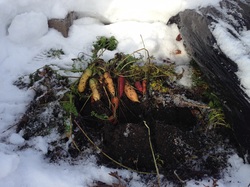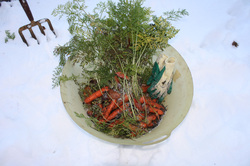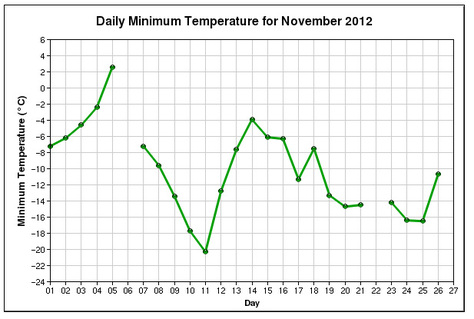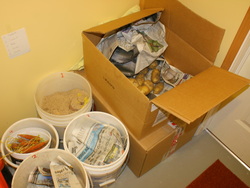
The bags were soon covered with snow and as it happened this year, we received around 30 cm of snow in November. My carrots were well covered and I decided I would leave them in the ground longer than last year. I was away in Cuba for the International Permaculture Convergence until December 7. I arrived back home to very cold weather and the overnight temperatures had been as low as -30 degrees C. I was a bit concerned that I had left my veggies in the ground too late…
I kept an eye on the daytime highs and on December 16, the temperature was 2 degrees C above freezing. I seized the opportunity to dig up my carrots. I could not have been more pleased as not a single carrot was spoiled! My December harvest was fresh and beautiful.
I’d love to hear if you have experiences with leaving veggies in the ground in our cold climate. What are your strategies?



 RSS Feed
RSS Feed